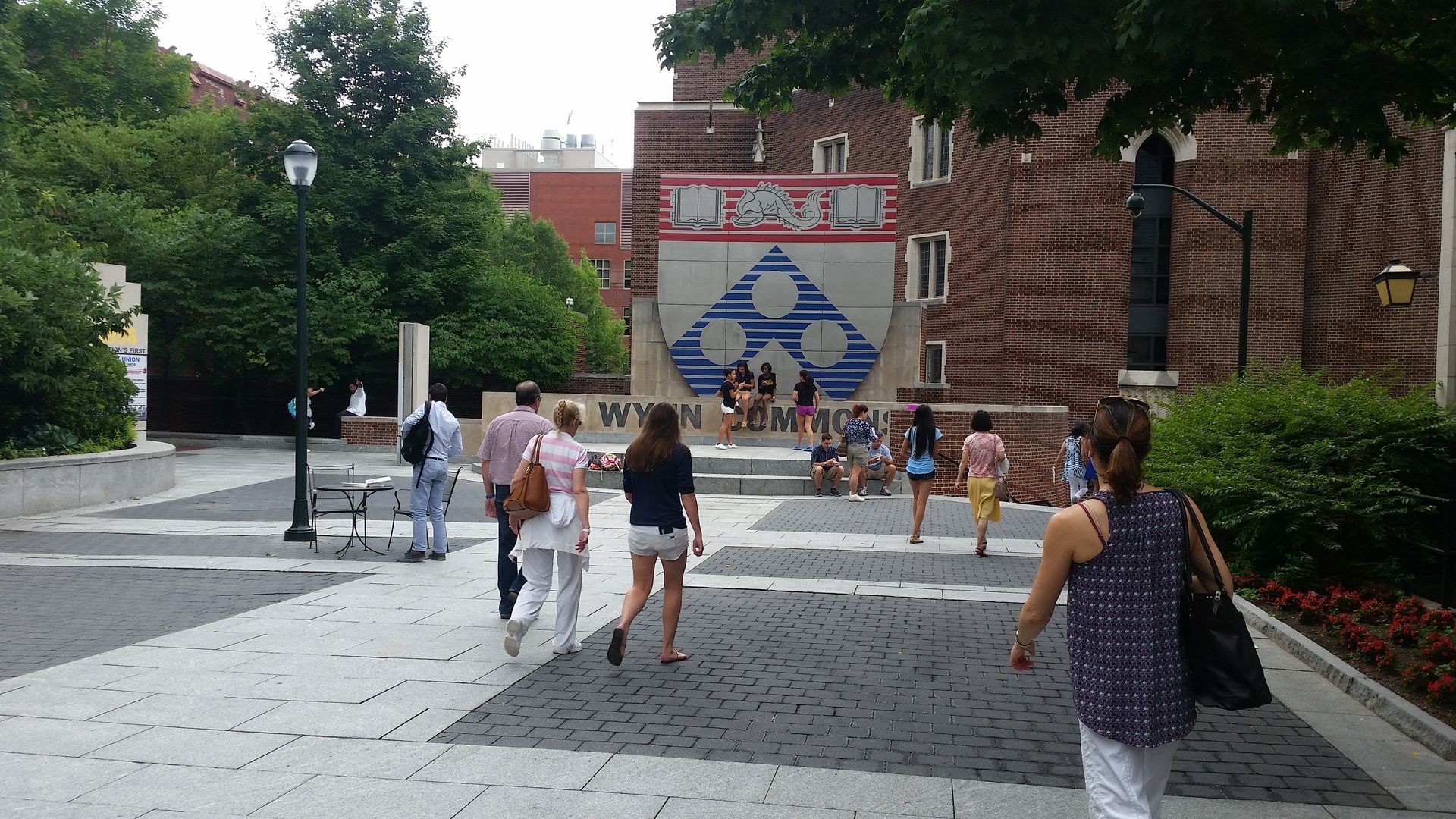Frequently Asked Questions
Next SAT Test Date:
11/08/25
Next ACT Test Date:
12/13/25
NEWSLETTER SIGN-UP
Recent Blog Posts

The 2026/27 FAFSA is now open; on time for the first time in two years. While changes to the FAFSA aren’t as drastic as the major overhaul in 2024/25, there are several significant changes that families preparing for college should note. This year's changes focus on refining the application process and adjusting how certain assets and income are handled. The good news is the form is now open earlier and is intended to be more user-friendly. One significant improvement is the simplified process for creating a StudentAid.gov account, or FSA ID. Applicants with a Social Security number can now be verified instantly, removing the frustrating multi-day waiting period from previous cycles. Additionally, inviting contributors (parents or spouses) has been streamlined. Students no longer need personal details like Social Security numbers to send an invite; a simple email address and code will do. For the 2026/27 FAFSA, several asset exemptions are now in effect. The net worth of small, family-owned businesses (with 100 or fewer full-time employees), family farms where the family resides, and family-owned commercial fishing businesses will no longer be counted in the Student Aid Index (SAI) calculation. Family-owned primary residences have never been counted towards the index. On the negative side, foreign earned income will now be included in the SAI calculation. Two other note-worthy improvements should be mentioned: Students can now select up to 20 schools to send their FAFSA scores. This means that, for the large majority of students, they won’t need to go back and order the FAFSA be sent toeach school on their list that didn’t make the FAFSA 10-school limit. Also, it is now easier to use the IRS data tool; tax data can now be imported into the FAFSA in real time as you’re competing the application.

In most social circles, students planning to go to college are pushed to attend the most prestigious college or university that will admit them. Students spend hours pouring over school rankings like those presented each year by U.S. News & World Report. “Can I get into the #5 school over the #10 school?” becomes an existential question that keeps kids up at night. But what if you’re one of the 70% of college applicants planning a career that involves grad school? What to be a scientist and do research? You’ll need a PhD. What to go into the health fields? Almost all career choices where you’re actually treating patients require advanced degrees. All told, nearly 40% of undergraduates will continue on to a grad-school program after completing their college degrees. Prestigious colleges often come with huge price tags. If you’re not careful, you could end up with so much debt after graduation you can’t maintain a decent standard of living. As a high school junior looking at colleges, how do you game the system to get you through college and a graduate program? The single most important factor that you have control over is the cost of your college programs, especially at the undergraduate level. Even if your family has saved money for your education, it makes a lot more sense to reserve some of that money for your graduate program where you may be attracted to higher-priced schools by unique educational opportunities or employment considerations. At least for your undergraduate degree, you should be looking to create a list of value colleges. A “value college” is one that offers you a quality education at a reasonable cost. Note that “reasonable cost” is not the university’s published cost of attendance. That’s like the sticker price on a car – no one pays that! Instead, reasonable cost is based on the net price you’ll pay after grants and scholarships. You can get a ball-park estimate of the net price you may pay at any college by using their Net Price Calculator, which colleges are required to post these on their websites. This does not mean you are stuck in a public, state-school program (although many state and state-related schools offer very high quality educations)! It does mean that your college list should be heavy on schools where you’re most likely to get the highest merit aid awards to reduce your net cost of attendance, leveraging your good grades in high school to a great deal at college. As an example, a 4.0 weighted GPA may get you a spot on main campus at Penn State your freshman year, which will cost you $50,400 this September. You could use those same great grades to get a full tuition scholarship to Temple University, a savings of $24,368, for a net cost of $17,690. That’s $32,700 less than attending good old PSU! Multiply that by 4 years, and you’re saving over $130,000! Of course, not everyone achieves a 4.0 GPA, but merit scholarships can start to kick in at GPAs as low as an unweighted 2.7 at many private schools like Rider University, where a full-tuition, Presidential scholarship requires a GPA of only 3.5. So how about that graduate degree? Choosing a value college for your undergraduate degree gave you more financial flexibility when you chose your graduate program. If you decide you need to attend a more expensive graduate program because it offers you unique educational options or future job opportunities, you’re in a better position to afford the more-expensive graduate program. But if you’re like most people, you can still use the value college approach to creating your list of graduate programs. The first year of a Wharton MBA program will cost $120,960, including room and board. A similar MBA program at Pitt’s Katz School of Business will only cost you $49,444 if you live in Pennsylvania. How much of a boost will you get from Wharton (ranked #5 by Forbes) than you will from Katz (ranked #37)? Probably not more than the $140,000 extra you’ll pay for the Wharton MBA, especially if that $140K is financed. So what’s the sweet spot for maximizing merit scholarship awards? Most colleges use complicated algorithms to develop their class lists. The boxes where they give the highest scholarships can include several factors, including academics, extracurriculars and achievements. GPAs are the best tool to predict which schools might offer you the most merit aid, because the information is most accessible. GPAs are important statistics for colleges. They affect rankings and the ability to attract quality students. GPAs below average reduce average rankings; GPAs that are too much higher than average are great, but students that are overqualified for a school are less likely to actually matriculate. The sweet spot for schools is generally between the 60th and 80th percent of their applicants. To maximize your chances of getting financial aid, your school list should be heavy on schools where your GPA falls within this range. Many schools are now test optional, but SAT or ACT scores that support your GPA or better can also increase your chance of acceptance and scholarships. Sometimes, it’s not about the grades. If Luther College, which is very big on music, needs a French Horn player for their orchestra and you happen to have gone to States for French Horn, you’re likely to get an offer with a good amount of money. But, but, but – that USNWR top-school rating! Relax! Your chance of getting into a good grad school isn’t dependant on your school’s undergraduate ranking, it’s dependant on how well you did while you were at school. Wharton MBA students are as likely to come from Iowa State as they are from Carnegie Mellon, but they all have one thing in common: they excelled in their class work and made a name for themselves at school. When you take a step back and look at the big picture, a quality education at a reasonably priced “value school” will leave you in a position to enjoy a financially secure and productive future. Choosing value schools, based on net-price-calculators and appropriate GPA ranges, to build your list of colleges will give you the best chance of choosing between a number of schools that offered you a great education at a very reasonable price.

The Trump administration has recently taken actions to freeze federal funding for several prominent universities, citing concerns over campus activism, allegations of antisemitism, and issues related to diversity and inclusion policies. These actions have sparked significant controversy, raising concerns about government overreach and the protection of academic freedom. While over 60 universities are facing funding reviews, seven universities have been targeted already because of their prominence. By far, Harvard University faces the largest funding freeze, with $2.2 billion in multi-year grants and $60 million in multi-year contracts. Harvard University has been particularly vocal in its opposition, filing a lawsuit against the administration and publicly rejecting its demands. Columbia University has had $400 million in federal grants canceled. They were threatened with a far higher amount, but negotiated a settlement that included adopting the government’s definition of antisemitism, willingness to adhere to the administration's demand for stricter disciplinary actions against students deemed to be disruptive and academic oversight of many Asian and Middle Eastern programs by the University’s senior provost. In response to a funding freeze on $1 billion in research funds, Cornell has attempted to placate the Trump administration while attempting to retain their educational integrity. They recently announced they were renaming their Dysob School of Applied Economics and Management to the Donald J. Trump School of Business Excellence in Business. This change was made after a significant donation and pressure from President Donald Trump, according to reports. The University of Pennsylvania was slapped with a freeze on $175 million because they allowed a trans swimmer to compete in an NCAA swim meet last year. Penn responded by saying that they have no athletic policy of their own - they follow NCAA’s policies, which at that time allowed trans-sexual students to compete. The freeze is still in place, but no new sanctions have been levied. Other institutions that have been sanctioned include Brown ($510 million), Princeton ($210 million, which represents half of their federal grant money) and Northwest university ($790 million). To date, academic institution responses have varied. Harvard University has been particularly vocal in its opposition, filing a lawsuit against the administration and publicly rejecting its demands. It has also floated bonds to recapture lost federal funds. Columbia University, in contrast, has agreed to implement some of the administration's requested policy changes to avoid losing federal funding. Other universities are still in the process of developing their responses. For instance, while Cornell has not yet filed a lawsuit, legal experts, including Cornell Law Professor Michael Dorf, have publicly stated that the funding freeze of over $1 billion is likely "illegal." At the same time, the university has attempted to placate the President by renaming their Dysob school in his honor. Key Points: 1. The administration's actions have raised concerns about the potential erosion of academic freedom and the politicization of higher education. 2. The financial impact of the funding freezes will have significant consequences for research and innovation at more that 60 universities. Penn has already reduced or eliminated several graduate programs and most schools will find they need to shift student research to favor graduate programs and away from undergraduate students. 3. The legal battle for NIH and NSF funds is just getting underway. It will take months perhaps years to sort out where and if the government has overstepped its legal authority to freeze funds authorized by Congress. 4. Any legal recourse that universities are able to win won’t be in time to address funding losses for the 2025/26 academic school year. Students entering majors that rely on lab or research activities need to talk with their school’s department heads to see how their courses might be affected. It's crucial to follow this developing situation as it unfolds, as it has far-reaching implications for the future of higher education in the United States.

Over the past two months, significant changes within the U.S. Department of Education have profoundly impacted student loans and financial aid. Many news articles have discussed these changes and their impact on students who are currently repaying their loans. This Blog article recaps some of the changes that have been made to the federal student loan system and discusses how they might affect students looking at colleges or looking forward to starting college next year. 1. 50% of the Department of Education staff was laid off two weeks ago, including most of the staff in the Federal Student Aid Office (FSAO), which oversees federal student loans and Pell grants. This could cause delays in rolling out the FAFSA form or making sure that the FAFSA website is online. In 2022, the FAFSA, which usually rolls out October 1st, was delayed until mid-December. This was due to implementation problems streamlining the FAFSA as mandated by Congress. Part of the reason the update took so long is the Federal Student Aid Office was understaffed for the project. This could just be a taste of the future with only a bare-bones staff left after the firings. It is interesting to note that the FAFSA website was down for hours the day after the FSAO cuts. Bottom Line for high school Seniors: Read up on current student loan guidelines on FinAid.org and make your FAFSA applications as soon as the application is released in the fall. 2. All Income Driven Reduction programs (IDR) have been effectively halted because borrowers cannot access the form required to update their income as required by the program. There have been Reddit and newspaper reports of students’ loan payments ballooning since the IDR programs have been suspended. An article in Fortune (3/17/25, Preston Fore) gave examples of monthly repayments that ballooned from $500 to several thousand dollars. It is important to note that IDR programs, including the Income-Contingent Repayment plan (ICR), the Pay as You Earn plan (PAYE), the Revised Pay as You Earn Plan (REPAYE) and the Saving on a Valuable Education Plan (SAVE) are plans spun off of the original Income Based Reduction (IBR) plans authorized by Congress in 2009. While the Trump Administration may be able to discontinue all IDR programs, it should not be able to discontinue the IBR program. The New York Times (2/28/25, Tara Siegel Bernard) quoted Scott Buchanan of the Student Loan Servicing Alliance saying he expected that IBR program applications will be available again in a few months, but we just don’t know. Bottom Line for prospective and current federal loan borrowers: Do not base your college or career plans on the hope of income-based repayment programs. If you need to borrow a lot to attend college, make sure your major and eventual career will support your loan payments. If you’re setting your sights on an expensive private college, consider more affordable alternatives like state universities. 3. The Public Service Loan Forgiveness Program (PSLF), authorized by Congress in 2007, allows borrowers who work for the any government office or non-profit organization, including schools, libraries and hospitals to apply for loan forgiveness after 10 years. PSLF is an IDR-based program, so during the repayment period, borrowers’ monthly payments are often much less than they would be on a straight 10-year repayment plan. An Executive Order signed by President Trump on March 7th immediately removed any program that may impact immigration, DEI, LBGTQ+ issues or any service that may “obstruct or influence Federal Government policy” from the PSFL program. This impacts thousands of health care workers, non-profit employees and many teachers who anticipated writing off the remainder of their student loans after 120 payments. Instead they may face an immediate increase in their monthly repayment schedule. Bottom Line for high school and college students looking to enter careers in teaching, governments work or health care: PSFL programs may be reduced to only certain professions, subject to future review or eliminated because repayments are based on an IDR formula. You should base your career and lifestyle choices on repaying student loan on a 10-year amortization schedule. 4. Policy makers are considering changes to tax laws exempting student loans from taxation. Traditionally, the federal government has encouraged high school students to continue on to college by making college education affordable. Financial aid grants are not taxed. IDR and IBR balances that are forgiven are not taxed. Student loan interest can be deducted on your Schedule A. Congress is currently considering eliminating all of these “perks”. Bottom line: A tax on grants effectively reduces the net benefit of the grant. At a 12% tax rate, a $10,000 grant will be worth only $8,800 after taxes. Students and their families will have to make up the difference out of pocket – not directly to the school, but to their family budgets on April 15th when they absorb the tax hit. Young families struggling to make ends meet may also loose the interest write-off every year they’re repaying their student loans. These changes to the Department of Education, student loan programs and, potentially, the tax code are an evolving story. The Trump Administration may fine-tune these programs or discard them. Judges have stepped in and may find that these changes are unlawful and must be reversed. High School Seniors are under the gun – they need to evaluate these changes immediately so they can make sure their college choices are still appropriate by the May 1st decision deadline. Juniors have the luxury of taking a wait-and-see position as policy is solidified. Students in college need to reevaluate the career choices if they were planning on refinancing their loans into an IBR or IDR or if they were planning on applying for the PSFL program. To stay safe, keep informed, don’t take on too much debt, write your congressman.



